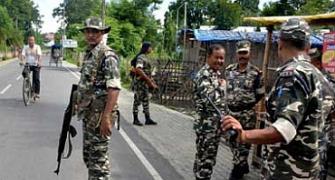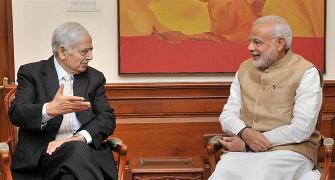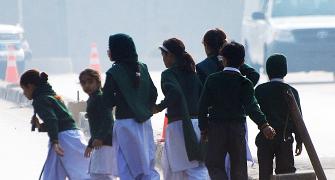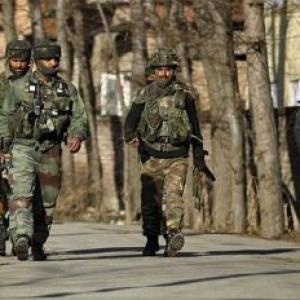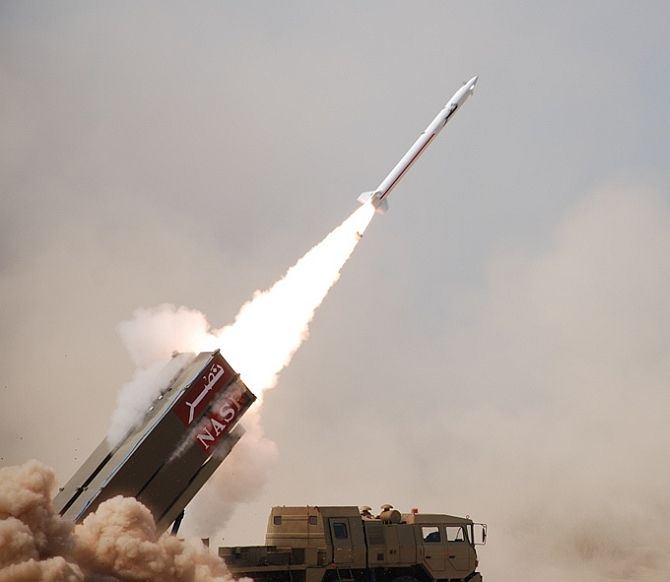
'If ever India loses its patience after repeated terror attacks and decides to retaliate against the terrorist camps, Pakistan may term that a conventional military attack and invoke the nuclear option.'
'This is a way to continue with terrorism without retaliation.'
Top nuclear scientist Dr R Rajaraman, emeritus professor of theoretical physics at the Jawaharlal Nehru University, believes Pakistan's growing nuclear arsenal is a matter of great concern to India with the Nasr missile being of special concern.
The co-chair of the International Panel on Fissile Materials and a member of the world scientists permanent panel on Mitigation of Terrorists Acts, Dr Rajaraman, below, left, tells Rediff.com contributor Rashme Sehgal why an alarming nuclear story is unfolding in the sub-continent.
Pakistan has the fastest growing nuclear programme in the world. By 2020, it is expected to get 200 nuclear devices most of which are targeted at India.
While countries around the globe are talking about diminishing their nuclear stockpiles, the opposite seems to be happening in the case of Pakistan.
It is true that Pakistan is producing more weapon-usable fissile material each passing year. So, for that matter, is India!
Estimates of Pakistan's rate of growth of nuclear warheads are often exaggerated in the West and blindly quoted by some by Indian analysts as well.
The main thing to understand about estimates of the number of nuclear bombs is that no one outside the respective governments will really know how many weapons have been assembled. And the government people are not likely to talk.
Most estimates by non-governmental think-tanks and analysts are just unverifiable hearsay. The only responsible outside estimates are based on nuclear fissile materials production and stocks.
So I will go by the estimates made by our International Panel on Fissile Materials which has been tracking fissile material production of all countries year after year.
It is true that the Pakistanis have set up 3 plutonium (Pu) producing reactors at Khushab and a fourth is in the making. But these are believed to be heavy water reactors of about 50 MWth (Megawatt thermal) capacity.
Such reactors typically produce, at 65 per cent efficiency, about 7 kg of Pu each per year. At best the three reactors can together produce only 105 kg in five years, which can fuel about 21 warheads.
Moreover, once the Pu is produced in the reactors it is not immediately available for making bombs. The fuel rods have to be cooled for a couple of years and then reprocessed to have the weapon-usable Pu extracted. So the actual production of assembled weapons will be much less.
The current arsenal, frequently quoted in think-tank reports, is supposed to be about 110 weapons. So even if that is correct and they add 21 more in the next five years, Pakistan cannot reach 200 warheads by 2020.
You must remember that the earlier Pakistani weapons used highly enriched uranium produced by A Q Khan's centrifuges. But as Zia Mian, M H Nayyar and I have shown in an audit we did of Pakistani uranium availability, their domestic supply of raw uranium is limited and can barely feed the four Khushabh reactors.
So there is unlikely to be much left for enrichment by centrifuges. Therefore I would keep the estimate of Pakistan's arsenal at 130 warheads or less by 2020.
Both Pakistan and India have doubled their nuclear stockpiles since 2007 with their weapons increasing at the rate of ten a year.
India's rate of warhead production is not 10 warheads a year. Its only functioning Pu production reactor is the Dhruva at the Bhabha Atomic Research Centre which annually produces about 18 kg of Pu which can fuel about 3, 4 bombs per year, not 10 as is stated.
The CIRUS reactor that used to produce weapons-grade Pu at BARC was closed down as part of the India-US nuclear deal.
Yes, this should be a matter of great concern to the people of both countries. Unfortunately, it is not.
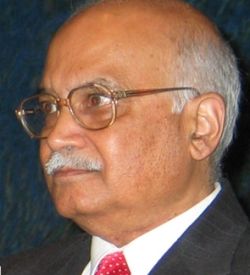 In response to India stating it would not hesitate to go beyond its border to eliminate terrorists, former Pakistan president Pervez Musharraf responded to say nuclear stockpiles were not being collected to be used at the time of a festival.
In response to India stating it would not hesitate to go beyond its border to eliminate terrorists, former Pakistan president Pervez Musharraf responded to say nuclear stockpiles were not being collected to be used at the time of a festival.
Pakistan has always maintained that its nuclear force was intended to deter a conventional attack by India. But it has also been using their nuclear umbrella for a more insidious purpose -- as a cover even for the terrorist attacks it sponsors in India such as the infamous Mumbai attack.
The idea is that if ever India loses its patience after such repeated terror attacks and decides to retaliate against the terrorist camps, hideouts or headquarters, Pakistan may term that a conventional military attack and invoke the nuclear option.
This is a way to continue with terrorism without retaliation.
China has confirmed that it is involved in at least six of Pakistan's nuclear projects even though it is well known that Pakistan has not fully adopted the International Atomic Energy Agency safeguards.
So far, in building two civilian reactors in Pakistan, China has not strictly speaking violated the Nuclear Suppliers Group guidelines. It has used the so-called grandfather clause (that the agreement with Pakistan was signed before the NSG sanctions came into being).
We must not forget that Russia had to invoke the same argument when starting to build our Kudangulam reactors. Furthermore, the two new civilian reactors China is building in Pakistan will be under strict IAEA safeguards. Pakistan cannot avoid these safeguards.
Nuclear experts repeatedly warn of the danger of some of these weapons falling into the hands of terrorists.
I don't think terror groups like the Taliban can get their hands on a Pakistani bomb. They may have launched some attacks at the gates of some military bases. But that is a far cry from penetrating the rings of security that Pakistan must undoubtedly have to guard its weapons.
Remember that these weapons, like our own in India, are considered the crown jewels of their arsenal.
Pakistan has deployed or is developing delivery systems for its nuclear warheads including aircraft, ballistic missiles and cruise missiles. They have also developed the battlefield Nasr missile to be used against India.
But there is no clarity on the chain of command on who will authorise the use of these weapons in case war breaks out between these two countries.
The Nasr is, in my opinion, the most dangerous development in South Asia.
It is not clear what the command and control status of such battlefield nuclear missiles will be.
For them to be effective they have to be used in battle in response to battlefield developments. In such situations it may be impractical for the ground commanders to seek and await a go-signal from the apex political leadership.
Pakistan Air Commodore Tariq Ashraf's book Evolving Dynamics of a Nuclear South Asia highlights the absence of civilian and bureaucratic involvement in the Pakistan Nuclear Control Authority. How far is this correct? Who controls the nuclear button in Pakistan?
Although the military has a strong involvement in Pakistan's nuclear control, I believe that the top political authority is also very much a part of it. The 'button' is controlled by a collection of people from the apex political and military sector.
How much highly enriched uranium has Pakistan acquired as opposed to India?
According to the annual Global Fissile Material Report 2010 of IPFM, Pakistan's stock of weapon grade HEU was about 2.5 ± 1 ton.
This might have increased somewhat by now, but as I have said there is not much uranium left in Pakistan to enrich, after feeding the three Khushab reactors.
Is there any likelihood of the nuclear race between the two countries ending in the near future?
The nuclear race may stop in a few years if neither side develops newer types of technology, such as ballistic missile defence or more nuclear-capable battlefield weapons. But by saying that the race will stop I don't mean that the weapons will be disarmed and thrown away. But only that further growth in the arsenals may stop.
Actually getting rid of these very dangerous weapons may not happen for a long time, if at all. That is a scary prospect!

